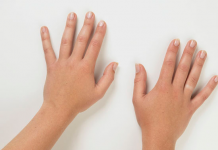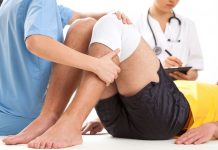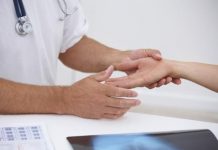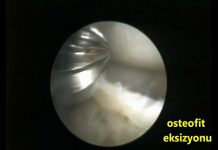WHAT IS THE CAUSE OF SHOULDER JOINT PAIN?
Except for obvious trauma (fracture-dislocation etc.) the problems accompanied by the shoulder joint pain can be divided into some main groups:
1-Instability: The conditions like instability or laxation/not feeling safe can be collected under this group. The shoulder joint can be frequently dislocated or the person can feel like it is dislocated with some movements. This condition can start after the trauma, once it is dislocated or upon the existing infrastructure of the shoulder joint (figure 1). The patients having this problem can be subdivided into two groups after the history and physical examination. In summary, while the surgical treatment methods are highly successful in one group (TUBS), physical therapy and rehabilitation methods are more appropriate in the other group (AMBRI).
[auto_thumb width=”300″ height=”170″ link=”https://www.hakangundes.com.tr/wp-content/uploads/omuz-agrisi1.jpg” lightbox=”true” align=”center” title=”” alt=”” iframe=”false” frame=”true” crop=”true”]https://www.hakangundes.com.tr/wp-content/uploads/omuz-agrisi1.jpg[/auto_thumb]
The Archive of Hakan Gündeş
2- Attricion: The main problem in this group which can be called as abrasion, corrosion or compression is the abrasion of some structures around the shoulder joint on the tendons enabling the movements of the shoulder (figure 2). This problem can be structural. In other words, the acromion protecting the shoulder joint may be congenitally tending to compress the tendons differently from the other people (type 3). In time, the changes occuring due to usage may cause to these problems.
[auto_thumb width=”300″ height=”170″ link=”https://www.hakangundes.com.tr/wp-content/uploads/omuz-agrisi1.jpg” lightbox=”true” align=”center” title=”” alt=”” iframe=”false” frame=”true” crop=”true”]https://www.hakangundes.com.tr/wp-content/uploads/omuz-agrisi1.jpg[/auto_thumb]
The Archive of Hakan Gündeş
Such problems are generally called as impingement. The bursa called tissue which is protecting the tendons on the shoulder joint like the air cushions in the cars can get thickhened by swelling and make pressure to the tendons (stage 1 impingement). In the next stage, the thickened bursa tissue and osteofit start to abrade the tendons in addition to compression (stage 2 impingement). These tendons are the ones turning and lifting the shoulder and called as rotatorcuff. Molecular level structural changes and less quality of the tendons upon such micro-traumas is generally called as tendinitis. In the next stage, lacerations can be seen on the worn tendons with less quality. This is called rotator cuff laceration. Since the most commonly seen tendon with laceration is supraspinatus, it can also be seen as supraspinatustendinitis in some sources.
In the early stages of the disease differently called as bursitis, inpingement or supraspinatustendinitis (stage 1 and 2), generally rehabilitation and/or some medication (cortisone etc). is preferred as treatment methods. At this stage, lime can be accumulated within the tendon. This is called calcific tendinitis (video, operating theater).
In the next stage (rotator cuff laceration) the main treatment is suturing the laceration in its place with surgical method. The most significant complication after the surgical treatment is to have laceration again. This method can be applied as open or closed method. The method known as closed method is called as arthroscopic surgery. In this intervention, the joint is reached with optical camera. The problem occurring on the joint is seen and recorded by video. In accordance with the type of the problem, some auxiliary Access holes are opened and surgical intervention is performed. There are several issues comparing the open surgery and atrhroscopic surgery results. As a general opinon, it is stated that the results of the arthroscopic surgery is at least as good as the open surgery results.
3-Limitation of movement: The third main pathology observed in the shoulder joint is the limitation of movement. The body may develop a defense mechanism against the pain occuring due to the aforementioned problems and limit the movements of the joint. In some cases, the movements can be limited idiopathically. Basically, the wall (capsule and synovia) surrounding the joint is contracted and shrinked. This is called as frozen shoulder. The treatment methods for this are rehabilitation, manipulating under anesthesia or surgery.











